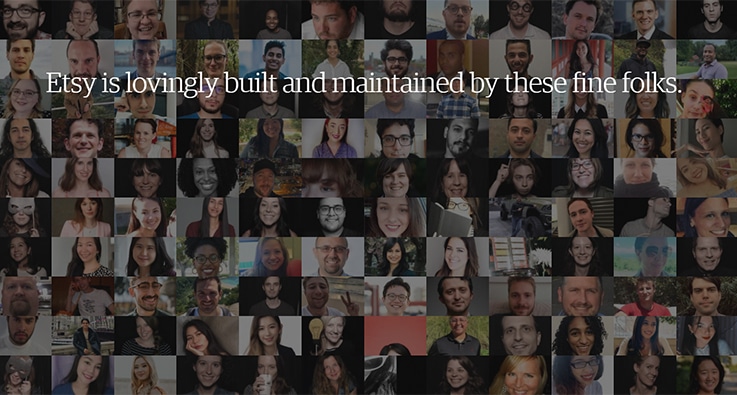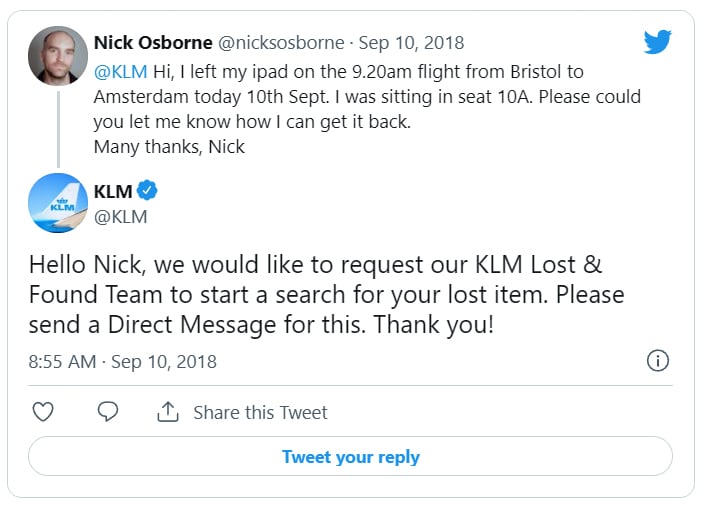
What makes humans different from robots? Personality. Well, a lot of things make us different, but personality is a big one. Your personality makes you who you are and helps you form relationships with other people. Without that personal element, interactions feel transactional and meaningless.
And that’s true whether you’re interacting with another person… or a business.
In fact, the purpose of good marketing is to connect you to a company and its brand on a deeper, more meaningful level. Good marketing taps into our human side, and that’s why it’s known as “humanizing your brand.”
Humanizing your brand invites your customers in. It makes them feel seen and valued, and that relationship is what helps them feel good about doing business with your company.
At first glance, it might seem like the sole purpose of marketing is to sell you on a product by any means necessary. And it is true that some companies take that approach to marketing.
We’ve all had those terrible experiences where we’ve felt like just another number in a long list of people that the company couldn’t care less about. We’ve found ourselves navigating convoluted automated call systems and online chats just desperately trying to reach a real person. And we know what it’s like to feel trapped in an irrelevant, long-winded sales pitch we don’t want to hear.
So if you don’t like marketing and branding, there’s a good chance you feel that way because it feels impersonal — and humanizing your brand can change all that.
If your company was a person, who would they be?
Humanizing your brand means giving it a real, authentic personality that people — your customers — can connect with. People want to do business with other people, and humanizing your brand helps you forge more meaningful relationships.
Is your brand lighthearted and easygoing? Thoughtful and compassionate? Determining your brand’s personality requires a close look at your target audience, mission and vision, product offerings, and more.
Defining your brand personality is a strategic process. It’s not a process that can be done in an afternoon, but it’s worth spending the time to get it right. Once you know who your brand is, you can infuse that personality into your interactions with your customers and make your brand your customers’ best friend.
Be the brand your customers need you to be
Evaluating your target customer is an important part of product development. You work hard to identify your customers’ demographics and pain points, and you craft your products (and your brand) to help them solve their problems.
Humanize your brand by building empathy toward your customers and the problems they’re facing. Your brand’s personality should understand their needs and offer the support, advice, or products they need to succeed.
Balance professionalism and personality
No matter what your brand’s personality is, it needs to be authentic and consistent. Your company may not be just one person, but every person that represents your brand should understand its personality and convey that to customers.
Make carrying out your brand’s personality simpler by establishing brand standards. Brand standards, tone, and voice all work together to humanize your brand in a way that makes sense to your target audience.
Strike balance between maintaining consistency and showing your human side. Talk to your audience and your customers like you would talk to a friend. Don’t be afraid to use a little humor when it’s appropriate.
Always remember that you’re interacting with people just like you!
Make your brand your customers’ best friend
When you humanize your brand, it might feel like you’re taking the focus off selling your products and making money. But you really aren’t. Taking the time to think about what your customers really need and what you can do to help them is all part of the plan.
What is your customers’ biggest problem? How are you helping them solve it? Creating a story around what they need and how your brand can help them achieve success is one of the best ways to build a compelling marketing strategy.
Show your people on your website
Your company is staffed by people, and introducing those people to your customers (and potential customers) gives them the opportunity to connect on a more personal level.
On your website, the “About” or “Meet the Team” pages are the perfect place to make those introductions. Show your company’s human side with high-quality pictures of your team, short bios, or fun facts.
If your company is large, you don’t necessarily have to forgo the personalized team page. Etsy didn’t let having a large team stop them from showing faces. In fact, over 1,500 employees are featured in a fun tile layout on their “Our Team” page

Another way to add a personal touch to your website is including authors on your blog posts. Whether it’s an author’s name at the top or a larger bio at the bottom, telling your readers who’s behind your blog can add a more personal feel to your site.
Use marketing automation — and make it personal
Marketing automation is automated, but that doesn’t mean it has to be robotic. Marketing automation can actually make your customer experience more personal if you do it right.
No one likes being bombarded with generic emails or inundated with pop-up windows. But what about an email from your favorite brand reminding you that there’s something in your cart that you wanted? Or a personalized email from a representative asking you if you have any questions they can answer for you?
Tailoring emails and other communication based on your customer’s interests, demographics, and behavior on your site can help you use marketing automation to your advantage.
Create email automation flows to nurture customers at every stage of the sales process. Make your company’s contact information easy to find and easy to use to make your customers feel like you’re there to help.
Capitalize on social media
If you have a social media presence, it can be the perfect platform to build more personal connections with your customers. Meeting your customers where they already spend time makes your brand feel more like an old friend.
Share behind-the-scenes photos and videos, interact with your customers, and share user-generated content.
KLM Royal Dutch Airlines puts their social media presence to good use by using Twitter to reconnect customers with personal belongings they’ve left behind on planes and in airports.

Glossier uses their Twitter feed to share news about their products, but they also interact with their fans — retweeting, sharing, and interacting in lighthearted ways.

Humanizing your brand starts and ends with your customers. By understanding who they are and what they need, you can develop your brand to connect with them and help them.
Not sure where to start? Get in touch with our team at Iconic Digital. We’re StoryBrand Certified and we love helping our clients humanize their brands for their customers.
Resources:
https://www.wordstream.com/blog/ws/2015/12/23/humanize-brand
https://www.responsiveinboundmarketing.com/blog/3-reasons-why-it-is-important-to-humanize-your-brand
https://smallbiztrends.com/2020/05/humanize-your-brand.html
https://crackerjackmarketing.com/blog/how-to-humanize-your-brand-and-why/
https://www.impactplus.com/blog/10-tips-to-humanize-your-brand
https://blog.hubspot.com/marketing/creative-agency-team-pages
Related Iconic blog posts:
https://iconicdigitalagency.com/blog/lead-generation/marketing-automation-with-a-personal-touch/
https://iconicdigitalagency.com/blog/uncategorized/what-is-branding-exactly/
https://iconicdigitalagency.com/blog/strategic-marketing/email-automation-sales-strategy/
